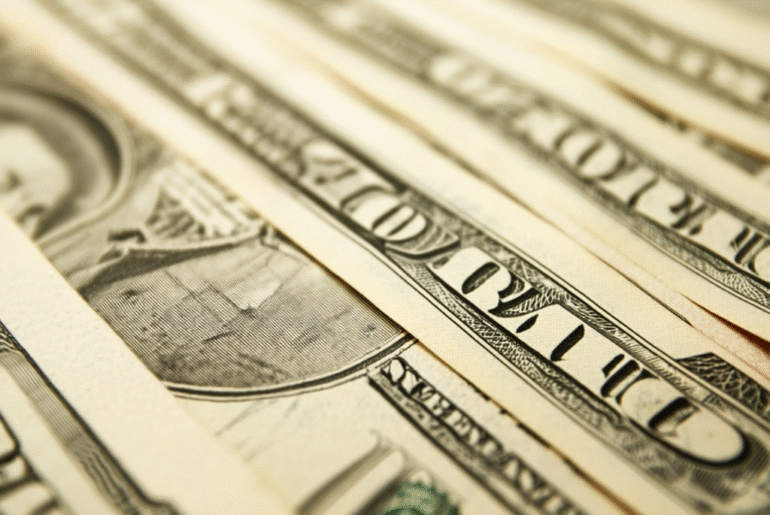This article may contain references to products or services from one or more of our advertisers or partners. We may receive compensation when you click on links to those products or services. Nonetheless, our opinions are our own.
The information presented in this article is accurate to the best of our knowledge at the time of publication. However, information is subject to change, and no guarantees are made about the continued accuracy or completeness of this content after its publication date.
If you’re considering adding income-generating assets to your investment portfolio, you have some options available. Some investors, including you, prefer stocks that are stable and offer a decent dividend. We’ll talk about three interesting stocks that recently raised their dividends and have yields between 3% and 9%. These companies show that they are dedicated to giving their shareholders value and that they can adapt and grow in today’s fast-changing market.
- Dividend Yields and What They Mean for Your Portfolio
- PepsiCo (PEP)
- Chevron (CVX)
- Rexford Industrial Realty (REXR)
- Additional Considerations for Deeper Analysis
- The Power of Consistent Dividend Increases in Building Wealth
- What to Consider Before Adding These Dividend Stocks to Your Investments
- How to Integrate Dividend Stocks into Your Financial Strategy
- Tips for Monitoring Your Dividend Stocks and Staying Informed
- Conclusion
- Frequently Asked Questions
- Recommended Reads
Dividend Yields and What They Mean for Your Portfolio
When you think about how investments fit into your financial plan, it’s important to know what dividend yield means. It shows you how much cash a stock is giving you back compared to its price, which can help you figure out how much money you might make from your investments. If the dividend was recently raised, a higher yield, usually between 3% and 9%, could mean that the stock is more appealing to investors who want to make money.
Keep in mind that high yields can be tempting, but they also come with more risk. Before investing, it’s important to look at the company’s financial health and past dividend payments.
PepsiCo (PEP)
Dividend History & Recent Raise
PepsiCo is indeed a Dividend King, having increased its dividend for 53 consecutive years as of the latest data. Their most recent dividend increase was announced on May 5, 2025, for a quarterly dividend of $1.4225 per share, payable on June 30, 2025 (ex-dividend date June 6, 2025). This represents a 4.98% increase from the previous quarter’s dividend of $1.355.
Current Yield
While the current yield is around 4.3%, slightly above the 3% lower bound, its consistent dividend growth and strong brand portfolio (Frito-Lay, Quaker Oats, Gatorade, etc.) make it a very reliable income play.
Financial Health (Payout Ratio)
PepsiCo’s payout ratio is around 78.38%, which is on the higher side but generally sustainable for a mature, stable company like PepsiCo with consistent cash flows. This indicates they return a significant portion of their earnings to shareholders.
Why it’s attractive
Its global reach, diverse product portfolio, and proven ability to navigate various economic cycles contribute to its dividend reliability and growth. It’s a foundational stock for many dividend portfolios due to its stability.
Chevron (CVX)
Dividend History & Recent Raise
Chevron is a Dividend Aristocrat, having increased its dividend for 38 consecutive years. Their latest declared quarterly dividend is $1.71 per share, with an ex-dividend date of May 19, 2025, and a payment date of June 10, 2025. This marks a 4.91% increase from the prior $1.63 per share.
Current Yield
Chevron currently yields around 4.9-5.0%. This falls comfortably within your desired range.
Financial Health (Payout Ratio)
Chevron’s payout ratio is around 75.24%. While oil and gas companies can experience more volatile earnings, Chevron’s strong balance sheet and commitment to dividends have allowed them to maintain and grow their payout even through commodity price fluctuations. Share buybacks also add to total shareholder return.
Why it’s attractive
As a major integrated energy company, Chevron benefits from both upstream (exploration and production) and downstream (refining and marketing) operations, which helps stabilize earnings. Its long dividend growth streak in a cyclical industry is particularly impressive.
Rexford Industrial Realty (REXR)
Dividend History & Recent Raise
Rexford Industrial Realty has increased its dividend for 10 consecutive years. Their most recent quarterly dividend is $0.43 per share, payable on July 15, 2025 (ex-dividend date June 30, 2025). This is a 2.99% increase from the previous quarter’s $0.4175.
Current Yield
REXR’s current dividend yield is around 4.87-4.9%, comfortably within your target range.
Financial Health (Payout Ratio)
REITs are unique in that they are required to distribute a high percentage of their taxable income, often leading to higher payout ratios. REXR’s payout ratio is reported as 137.96%. While this number might seem alarming for a non-REIT, it’s common for REITs as their “earnings” (often FFO – Funds From Operations) are calculated differently than traditional earnings per share (EPS). It’s more important to look at their FFO payout ratio for REITs.
Why it’s attractive
Industrial REITs, especially those focused on last-mile distribution and logistics in strong markets like Southern California, have benefited from the growth of e-commerce. REXR’s strategy of redeveloping and repositioning properties can drive significant rental income growth, supporting future dividend increases.
Voted "Best Overall Budgeting App" by Forbes and WSJ
Monarch Money helps you budget, track spending, set goals, and plan your financial future—all in one app.
Get 50% OFF your first year with code MONARCHVIP
Additional Considerations for Deeper Analysis
Dividend Safety Scores
Beyond the payout ratio, some services provide “dividend safety scores” that factor in a company’s financial health, debt levels, cash flow generation, and industry trends to assess the likelihood of future dividend payments. For example, Simply Safe Dividends rates PepsiCo as “Very Safe,” Chevron as “Safe,” and Rexford Industrial Realty as “Borderline Safe” (which is common for REITs due to their higher payout structure).
Economic Moat
A “moat” refers to a company’s sustainable competitive advantage. Companies with wide economic moats (e.g., strong brands like PepsiCo, cost advantages, network effects) are often better positioned to generate consistent profits and support long-term dividend growth. Morningstar, for instance, assigns moats to companies.
Valuation
Even with strong dividend characteristics, it’s important to consider if the stock is currently overvalued. A high yield can sometimes be a sign of a falling stock price, so it’s crucial to assess the underlying business fundamentals.
Future Growth Prospects
While these are income-focused stocks, understanding the company’s future growth drivers is essential. This could be through market expansion, product innovation, or strategic acquisitions.
Analyst Consensus
While not the sole determinant, reviewing what analysts are saying about a stock’s earnings and dividend prospects can provide additional insights.
The Power of Consistent Dividend Increases in Building Wealth
Regularly raising dividends can have a big effect on your portfolio, turning small investments into long-term wealth. When a business promises to raise its dividend, it shows that it is financially stable and healthy. It means that the business is making steady profits and putting the needs of its shareholders first.
Compound Growth: Reinvesting dividends can lead to exponential returns through compounding over the years.
Inflation Hedge: Regular increases help your income keep pace with or outstrip inflation, preserving your purchasing power.
Market Resilience: Dividends provide a buffer during downturns, offering income even when stock prices fall.
What to Consider Before Adding These Dividend Stocks to Your Investments
Before investing in dividend-paying stocks, evaluate the following critical factors:
Sustainability of Dividends: A high yield might seem attractive, but check whether the company’s earnings can support the payout. Look at the payout ratio—it should ideally stay below 60% to allow for future growth.
Financial Health: Review the company’s balance sheet, income statement, and cash flow. Healthy profit margins, revenue growth, and low debt levels indicate strength.
Dividend Track Record: Companies with a history of maintaining or growing dividends are generally more reliable for long-term income.
Economic Sensitivity: Consider how interest rates, inflation, and economic cycles may impact the company’s ability to sustain dividend payments.
| Metrics | Healthy Ranges |
|---|---|
| Payout Ratio | Below 60% |
| Debt-to-Equity Ratio | Below 1.0 |
| Dividend Growth (5-Year) | Positive Growth Trend |
How to Integrate Dividend Stocks into Your Financial Strategy
Adding dividend stocks to your portfolio can be a smart way to enhance long-term growth and income stability. Consider these tips:
Diversification: Avoid concentrating on a single sector. Include dividend stocks from industries like utilities, consumer goods, healthcare, and energy.
Reinvestment Strategy: Reinvest dividends to take advantage of compounding, increasing your investment returns over time.
Regular Monitoring: Track performance, earnings updates, and dividend trends to ensure your holdings remain aligned with your financial goals.
Tips for Monitoring Your Dividend Stocks and Staying Informed
To stay on top of your dividend investments:
Review Monthly: Regular reviews help you react promptly to changes in dividend policies or market conditions.
Use Tools: Leverage stock market apps, dividend trackers, and financial news alerts.
Watch Economic Trends: Keep tabs on GDP growth, employment data, interest rates, and inflation as they directly affect market sentiment and dividend policies.
Engage with Experts: Follow industry analysts and credible voices on platforms like LinkedIn or financial news sites for real-time insights.
Conclusion
Dividend stocks are still a great way to build wealth over time, especially when they consistently pay out more money. Investors can make a steady income by putting their money into financially stable companies that regularly raise their dividends. This way, they can take advantage of the power of compounding. If you’re just starting out or want to rebalance your portfolio, dividend-paying stocks from different sectors can help you ride out market ups and downs and keep moving toward your financial goals. Always conduct thorough research, monitor trends, and stay up-to-date to ensure your investment choices are both smart and long-lasting.
Frequently Asked Questions
What are the key stocks discussed in the article?
Highlights three stocks that recently increased their dividends, featuring yields between 3% and 9%. These companies are known for strong financial performance and consistent shareholder returns.
Why is a dividend increase significant for investors?
A dividend increase signals financial health and confidence in future earnings. For investors, this can translate to a reliable income stream and possible price appreciation.
How can I assess the sustainability of these dividend increases?
Review payout ratios, cash flow statements, and the company’s dividend history. A lower payout ratio and consistent cash generation suggest sustainability.
What factors should I consider before investing in dividend stocks?
Evaluate market conditions, the company’s industry outlook, and financial fundamentals. Understand the business model and growth prospects before investing.
Can dividend-paying stocks help in a diversified portfolio?
Yes, they offer both income and potential growth, contributing stability in volatile markets and improving overall portfolio performance.

Reviewed and edited by Albert Fang.
See a typo or want to suggest an edit/revision to the content? Use the contact us form to provide feedback.
At FangWallet, we value editorial integrity and open collaboration in curating quality content for readers to enjoy. Much appreciated for the assist.
Did you like our article and find it insightful? We encourage sharing the article link with family and friends to benefit as well - better yet, sharing on social media. Thank you for the support! 🍉
Article Title: 3 Dividend Stocks Yielding 3%-9% Just Got a Raise
https://fangwallet.com/2025/08/02/3-dividend-stocks-yielding-3-9-just-got-a-raise/The FangWallet Promise
FangWallet is an editorially independent resource - founded on breaking down challenging financial concepts for anyone to understand since 2014. While we adhere to editorial integrity, note that this post may contain references to products from our partners.
The FangWallet promise is always to have your best interest in mind and be transparent and honest about the financial picture.
Become an Insider

Subscribe to get a free daily budget planner printable to help get your money on track!
Make passive money the right way. No spam.
Editorial Disclaimer: The editorial content on this page is not provided by any of the companies mentioned. The opinions expressed here are the author's alone.
The content of this website is for informational purposes only and does not represent investment advice, or an offer or solicitation to buy or sell any security, investment, or product. Investors are encouraged to do their own due diligence, and, if necessary, consult professional advising before making any investment decisions. Investing involves a high degree of risk, and financial losses may occur including the potential loss of principal.
Source Citation References:
+ Inspo
PepsiCo (PEP) dividend History, Dates & Yield. (n.d.). StockAnalysis. https://stockanalysis.com/stocks/pep/dividend/ Chevron (CVX) dividend History, Dates & Yield. (n.d.). StockAnalysis. https://stockanalysis.com/stocks/cvx/dividend/ Rexford Industrial Realty (REXR) dividend History, Dates & Yield. (n.d.). StockAnalysis. https://stockanalysis.com/stocks/rexr/dividend/












































